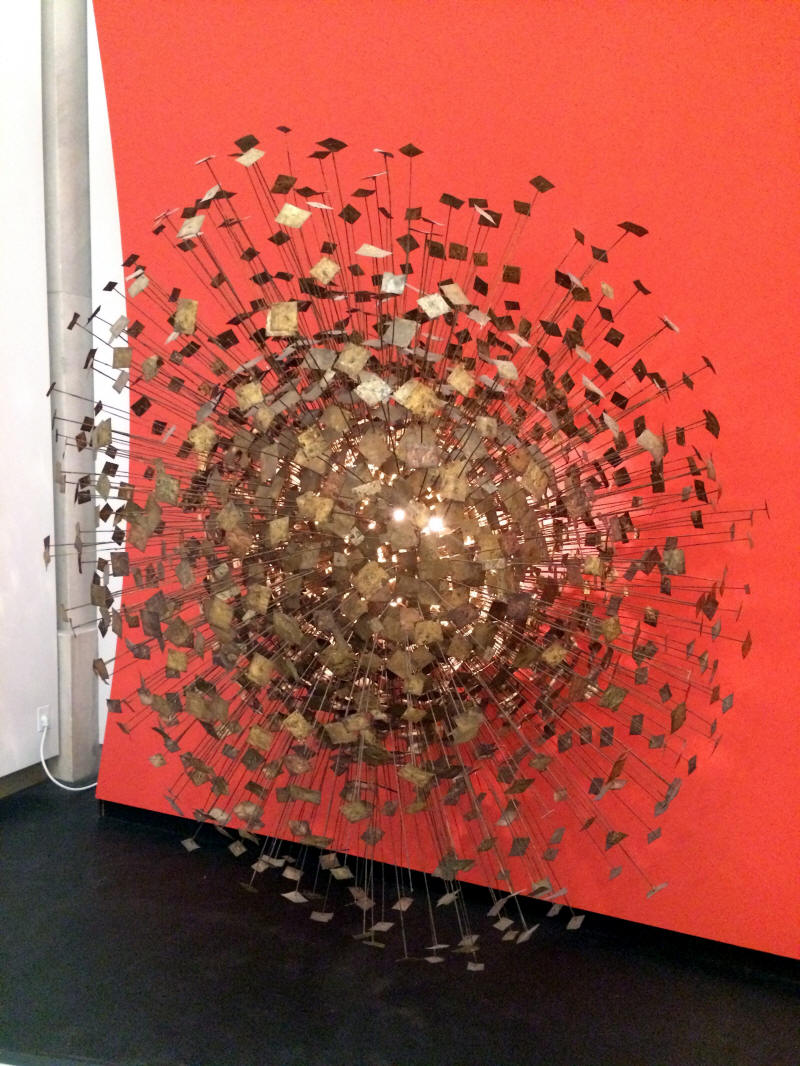Passover in Washington, DC
April 22-24 2016
We flew down to DC to visit Libby Stern and her sweetie Jay Lerner for Passover, an important Jewish holiday where the story of the Jews’ exodus from Egypt is ritually told during a traditional meal called a Seder. Newly living on the east coast and being an empty nester for the first time, Alison really wanted to celebrate by having a Seder with at least one of Jeff’s siblings, something rarely done in the past when she and Jeff lived in SoCal. Plus, it had been a while since the last get together with Libby. Plus … DC! Unfortunately Liz and Ben and their respective families couldn’t make it, but we forged ahead nonetheless.
 We
flew in Thursday evening, Dave heading to the airport from work via the
Silver Line and meeting Alison at the airport. The flight was only an
hour and a half long. Libby and Jay live within spitting distance of
Reagan airport (we could have walked to their house easily), and we
stayed at a Hilton a couple blocks away, so it wasn’t too late by the
time we arrived. We joined them for dinner at a restaurant just down
the road from the house called Enjira. There’s a crazy amount of ethnic
variety in the DC area, and this place was Ethiopian, which meant you
had rolls of spongy, soft bread (it looked like the warm rolled up wash
cloths they give you on airplanes) that you used to scoop up food
instead of using utensils. You unrolled the bread, pulled a small strip
off, and then wrapped it around a variety of fillings, from sautéed
spinach in some kind of sauce to spiced lamb, all of which were served
together on one large communal platter. Kind of like tapas with no
silverware.
We
flew in Thursday evening, Dave heading to the airport from work via the
Silver Line and meeting Alison at the airport. The flight was only an
hour and a half long. Libby and Jay live within spitting distance of
Reagan airport (we could have walked to their house easily), and we
stayed at a Hilton a couple blocks away, so it wasn’t too late by the
time we arrived. We joined them for dinner at a restaurant just down
the road from the house called Enjira. There’s a crazy amount of ethnic
variety in the DC area, and this place was Ethiopian, which meant you
had rolls of spongy, soft bread (it looked like the warm rolled up wash
cloths they give you on airplanes) that you used to scoop up food
instead of using utensils. You unrolled the bread, pulled a small strip
off, and then wrapped it around a variety of fillings, from sautéed
spinach in some kind of sauce to spiced lamb, all of which were served
together on one large communal platter. Kind of like tapas with no
silverware.
Friday, Jay was working, but Libby went with us to visit the National Mall, where the Smithsonian museums (and many other attractions) are laid out in a long strip, with the Washington Monument on one side and the Capital on the other. We started in the National Gallery of Art Sculpture Garden, a park with a huge circular pool in the center and various sculptures around the edges. It was mostly modern art (with a few things that seemed like they were supposed to be art but didn’t deserve the name mixed in).
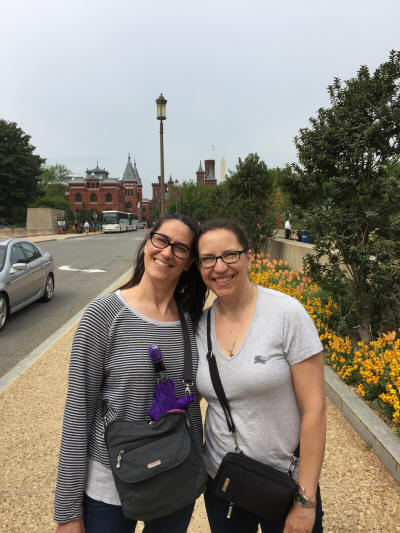 |
 |
Alison and Libby were very helpful in the traditional mocking of the modern art. We christened one of the pieces, a set of six marble chairs, the Vulcan High Council meeting area. There was a bit of cavorting with the rabbit sculptures and general sounds of awe and wonder (“awwww, I wonder if the people in charge did this as some kind of joke… ‘let’s pile a bunch of cinder blocks in a corner and see if people take it seriously’”).

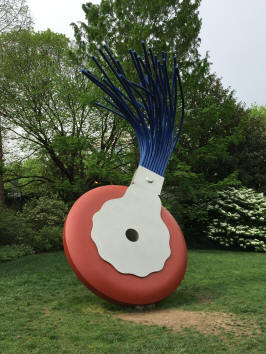 |
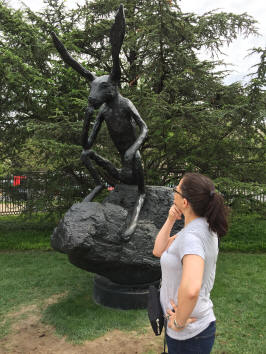 |
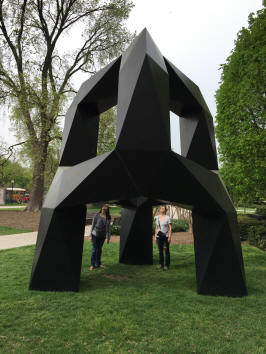 |

Then we visited the Hirschorn museum. The outdoor exhibitions of (theoretically) art paled by comparison with the interior displays (even the bumble people, pictured below). Unfortunately, most of it was multi-media and did not lend itself to being photographed. The weird thing is that it was strangely compelling, yet utterly ridiculous at the same time. Like the shot below, the lower level of the museum, where the floor and walls are covered with twenty foot high sentences. It’s … strangely cool, and yet you read the sentences and they were silly, trite, trivial, almost meaningless little phrases. But they were pithy…. can’t fit too many words on a wall if the letters are in 10000 point font… so it did have brevity going for it. The entire floor created a chaotic dissonance in the brain where you could see it was nonsensical, but actually felt like maybe, if you squinted a bit and slammed down three or four shots of tequila in quick succession, you could call it art.
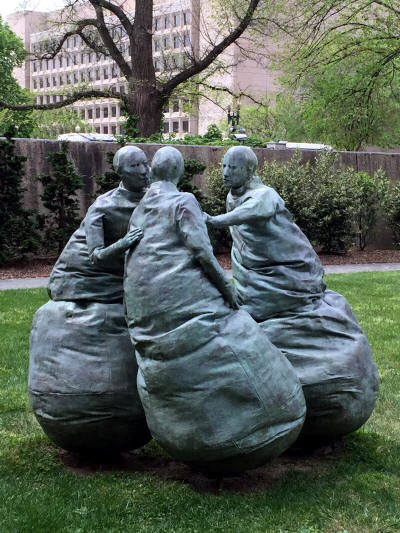 |
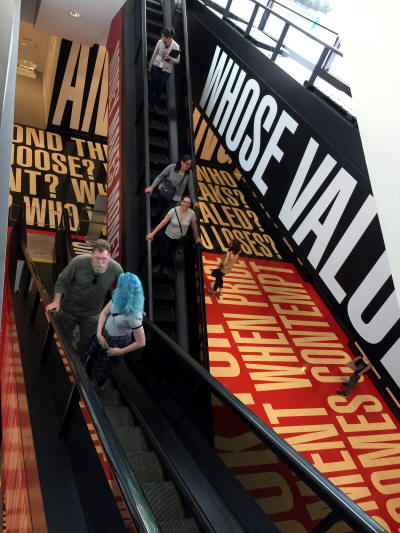 |
Inside, we entered the first multi-room, a multimedia exhibit
called “Suspended Animation,” and it too was strangely compelling.
The room was so dark you couldn’t see the floor, leading to a certain
amount of concern that maybe there were pit traps you could fall into,
because… well, art has no boundaries. Perhaps the artist wanted to
use death and dismemberment as a metaphor for the human condition.
But no, there was just a video of a computer generated set of lips the
size of a medium sized van, the lower lip under water, bumpy and covered
in glossy pinky-red lipstick and somehow horrific and amusing at the
same time. Then, it spoke in a woman’s voice with some kind of
eastern European accent. “I am the lips. The lips that
speak. I speak of the lips that I am.” And it went on and
on, saying nothing remotely interesting. But it was being said by
weirdly mesmerizing, gigantic, bumpy pinky-red lips, so that lent it a
certain je ne sais qoui.
There were more of the multimedia presentations through a chain of
rooms… many more. There was a weirdly altered computer generated
President Obama head, vaguely reminiscent of Max Headroom, that gave the
speech he should have given at… well, some speech he made that the
artist apparently didn’t fully appreciate, or at least felt left room
for improvement. There were computer generated alien heads against
computer generated space backgrounds saying something that probably
wasn’t a special code to make people turn into psychotic axe murders
(not, however, taking bets on that). There were computer generated
firebirds that morphed into bald eagles. There was a computer
generated thing that looked like a primitive version of Minecraft
people, apparently responding to random digital events and trying to
create a god concept from it (from the description of the exhibit; it
was not clear what the events were, how you were supposed to interpret
whatever the god concept was, or even what of the blobby things moving
around were supposed to be people).

Then we moved on to the Smithsonian Institution Donald W. Reynolds
Center for American Art and Portraiture (aka the National Portrait
Gallery), and learned something right there, because who would have
guessed that “portraiture” was a real word? Alison had fond
memories of visiting the place a long time ago. Dave was a bit
more iffy, but game to try anything
The place was awesome.
There was some modern art to mock, which we’ll skip… no, ok, which we’ll provide a little sample of later. But just the portrait section by itself was fascinating and would have been worth a day by itself. Part of it was that, while traditional portraits were prevalent, there were a number of different kinds of “portraiture.” Some were sculptures that ran from the classic bust of an ancient Roman to a funky wooden caricature of Bob Hope. Some were photographs. Some of them were digital, like one of Britney Spears that were shots of her face over her entire life that morphed into one another. Some were abstract, some photorealistic. The people ranged from historically prominent figures, to athletes, to entertainers, to relatively common people with no real significance attached to them. And they each had a little snapshot of the person’s life next to it. It really was fascinating
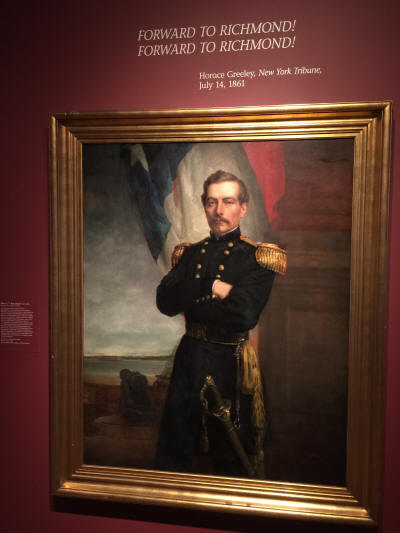 |
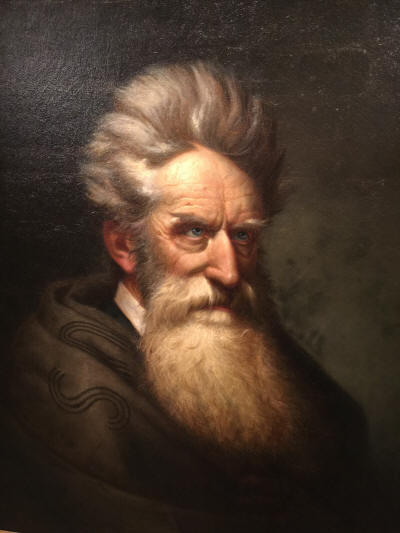 |
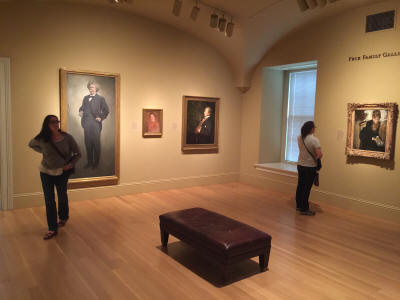 |
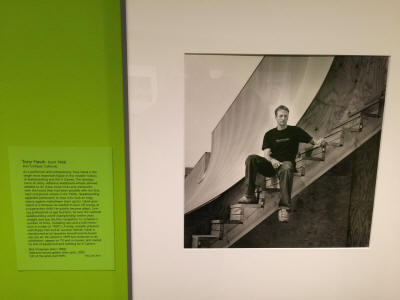 |
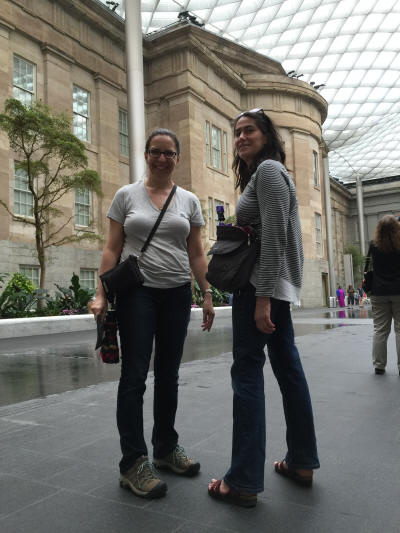 |
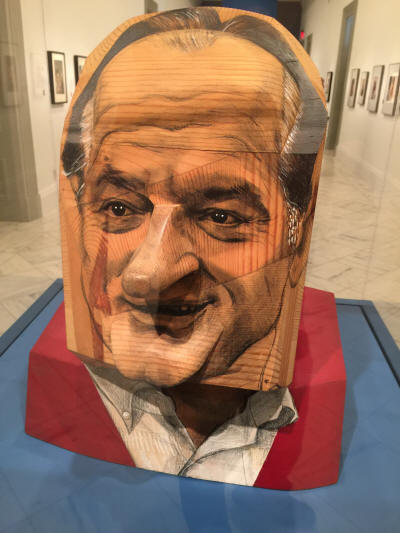 |
The piece below, for instance, is a portrait of a woman who committed suicide; her husband commissioned the piece. She has an ambiguous expression and there is no indication of what it was supposed to signify... but the way it was presented was haunting.
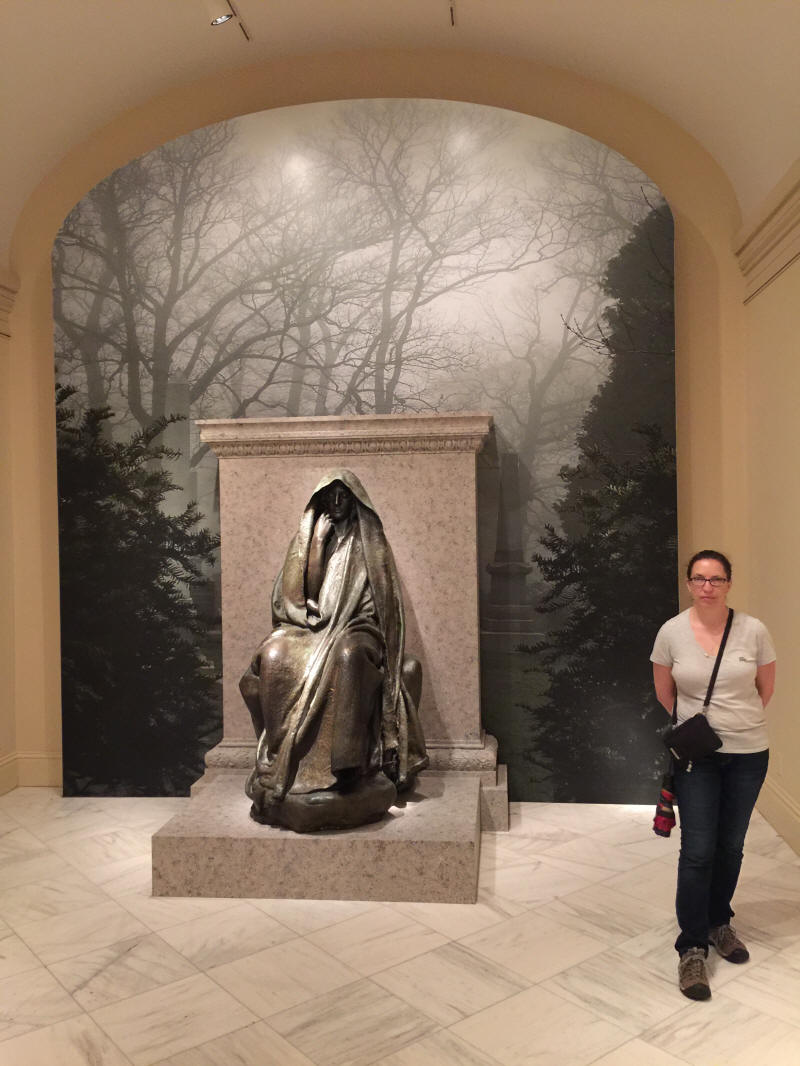
There were some sections that were Art rather than Portraiture, all
mixed in, landscapes and abstract works and one section that were
paintings (or more complex presentations like the gold inlaid wooden
panel below) of angels and biblical figures. Everything was laid
out in rooms with an utlimate feng shui vibe, colors and placement and
textures all carefully selected to make the art a central, but
harmonious, part of the entire experience.
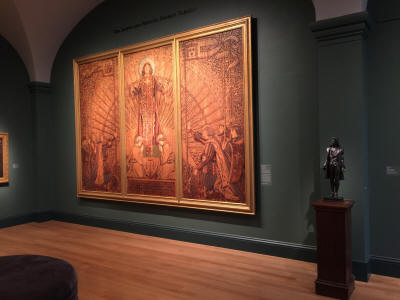 |
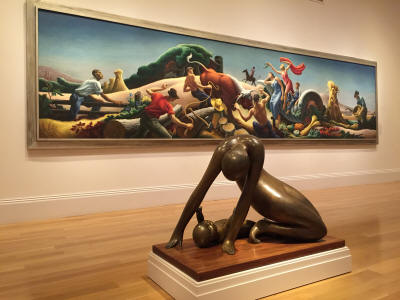 |
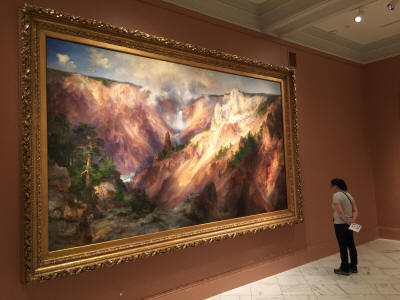 |
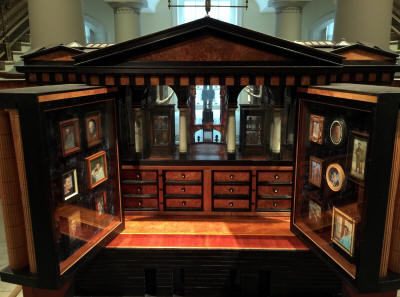 |
The American art section also had folk art, including something that
looked like the gaudiest, most expensive silver, gold and jewel
encrusted church alter in the history of mankind. That is, until you got
close enough to see it was furniture wrapped in aluminum foil with fake
plastic gems glued on. Furniture and other things… light bulbs,
candelabras, maybe a pet or two. It was built in a garage over a
fourteen year period by James Hampton, a man who humbly described
himself as “Director, Special Projects for the state of eternity.”
There were many other funky, crafty things as well that actually looked
like they took skill and a feel for esthetics to make, minus the
insanity of James.
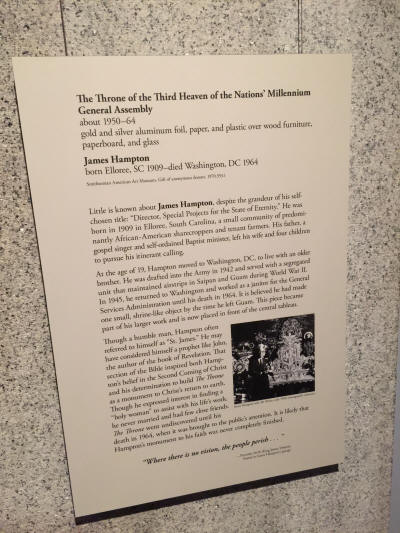 |
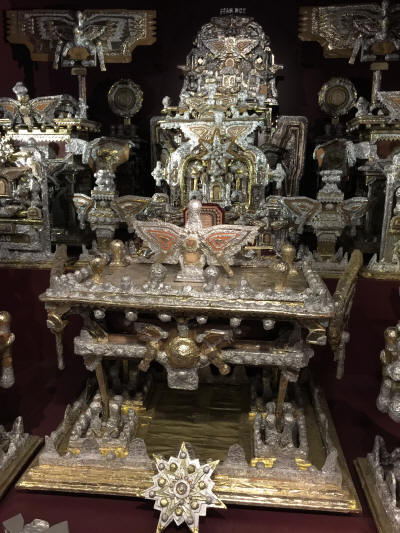 |
Friday was the Seder. Ben Stern was out of the country, and Liz Stern couldn’t make it, but Jay and Libby had invited a friend and a young couple they knew through some murky connection (my father’s brother’s wife’s uncle’s barber knew their father’s accountant’s college roommate, or something like that). Alison says that one of the strengths of the Jewish community is that it is a community; if you know someone that is isolated from family for some reason during the holidays, you invite them over!
The Haggadah (not to be confused with Aggadah, says wikipedia) is a Jewish text that sets forth the exodus story and order of the Passover Seder. Reading the Haggadah at the Seder table is a requirement for each Jew to "tell your child" of the Jewish liberation from slavery in Egypt as described in the Book of Exodus in the Torah. But apparently, you can tailor it as you see fit, and Jay did a custom version that was both educational and really fun. Jay said there were 15 parts of the Haggadah (Wikipedia says there are 14, but it seems like there are different versions of the official version that you create your own version from, so…), but we were only doing eleven of them. He hastened to assure everyone that all the parts where you had to drink wine were included. Also that, while tradition said you drank the full glass of wine in those parts, there was nothing sacred about that, which we took to mean you could fill your glass up again and have two instead (really, they were small glasses). OK, just kidding on that one.
Jay’s version included masks (Dave got the “Plague of Locusts” mask while Alison got the “Plague of Darkness” mask), readings, bee jokes, a treasure hunt (for the Afikoman. a ceremonial piece of matzo bread that is broken off at the beginning of the ceremony), and little factoids (like, did you know that there is no historical evidence that the Jews were actually ever in Egypt?). And plenty of wine and great food, including matzo ball soup (yum). So, all in all, a good time!
The next day we had breakfast with Jay and Libby. Then we all headed to a craft fair in the National Building Museum, which had an impressive display of booths and goods, but nothing compelling enough to buy. The building itself was pretty cool and probably would have been worth a visit just as a building that was a museum for buildings, making it a bit self-referential. There was as small exhibilion of Chihuly pieces in the center as well, and added plus.
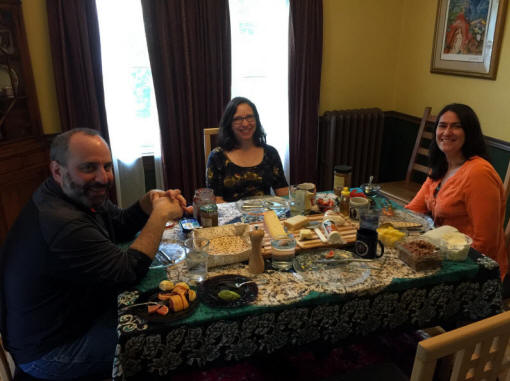 |
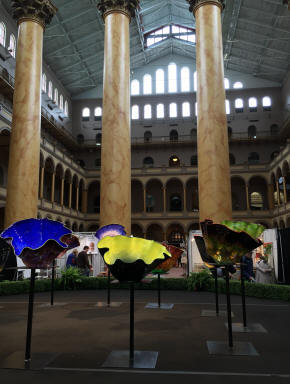 |
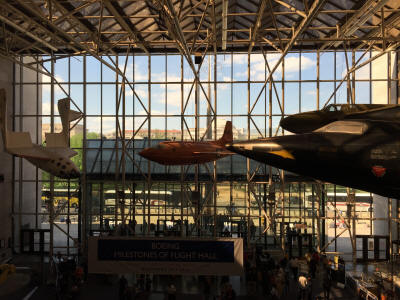 |
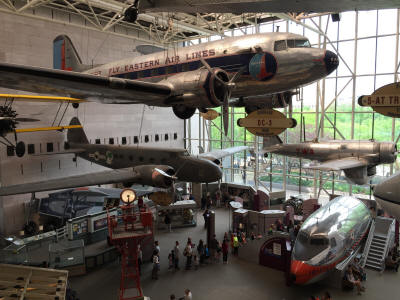 |
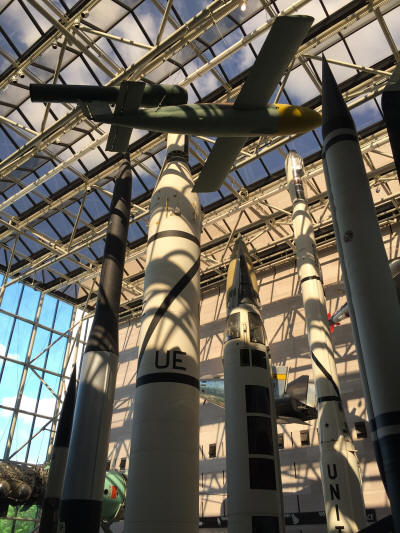 |
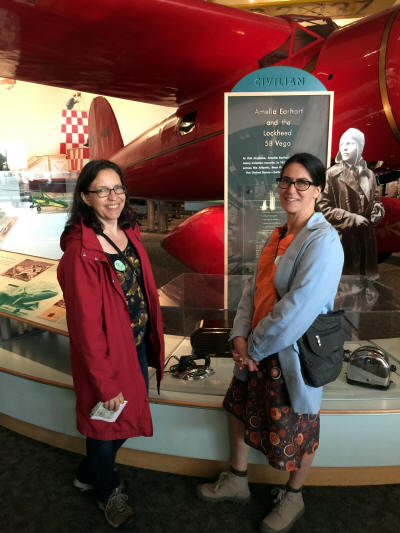 |
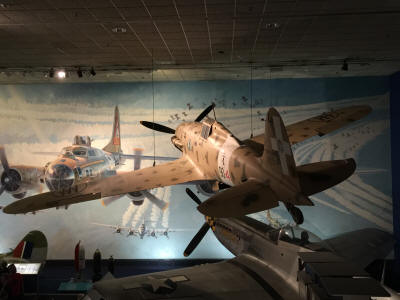 |
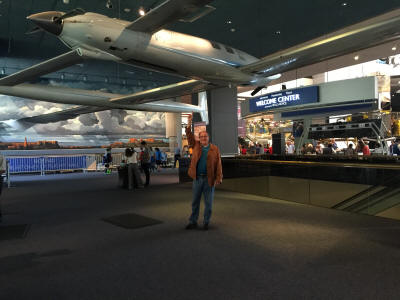 |
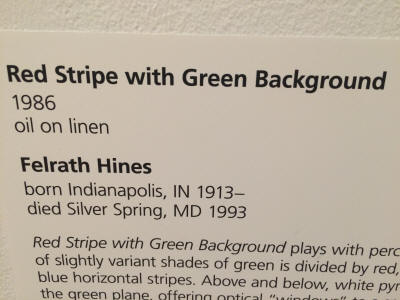 |
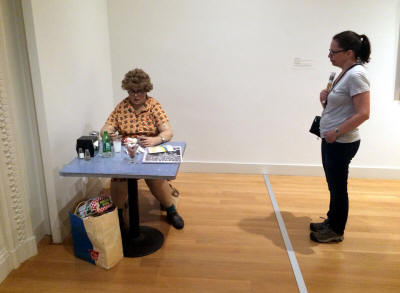 |
***sigh***. Ok, to be fair, we will close out with a piece of modern art that was actually pretty cool, sufficiently so to avoid mocking.But only because it looks like an exploding universe.
